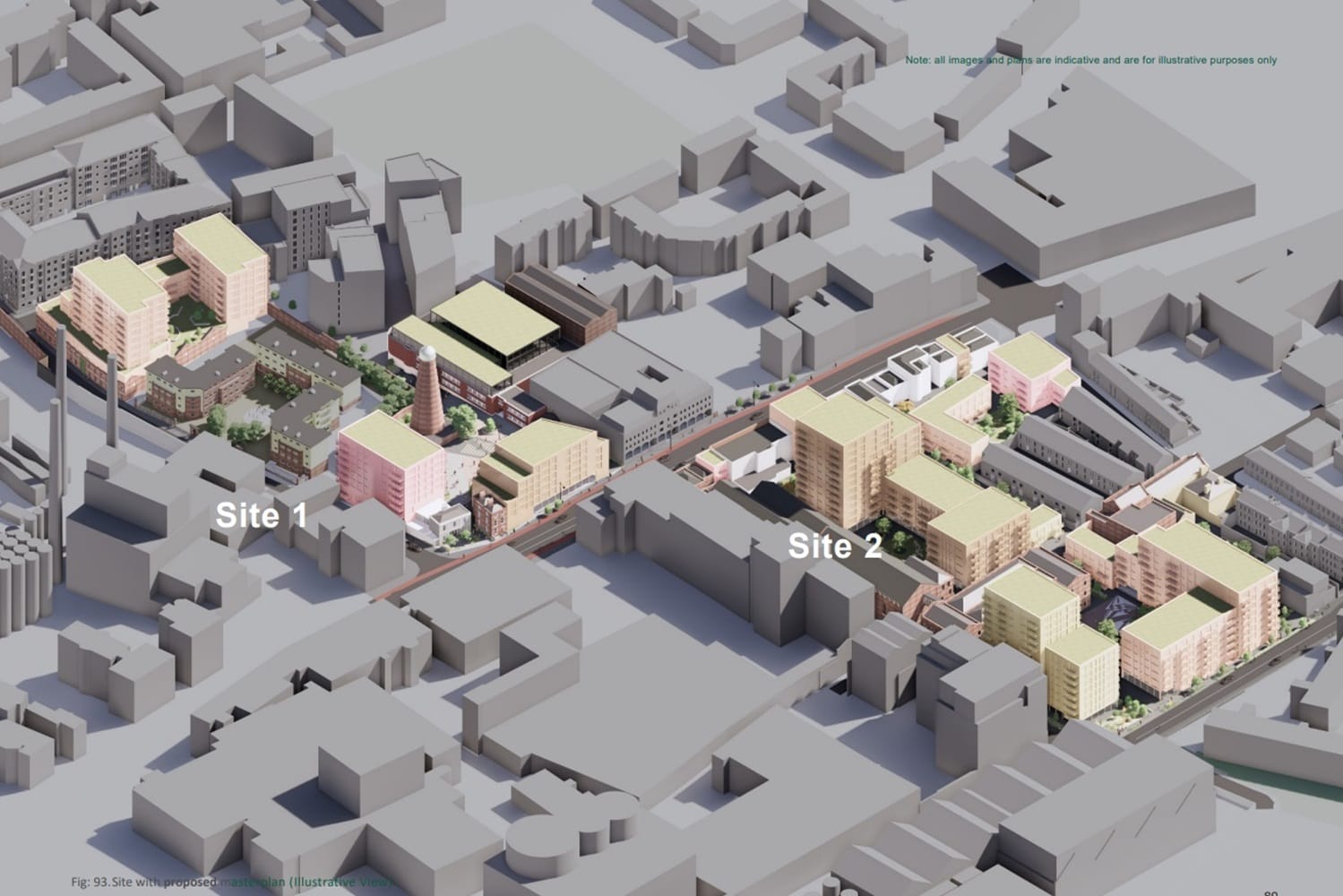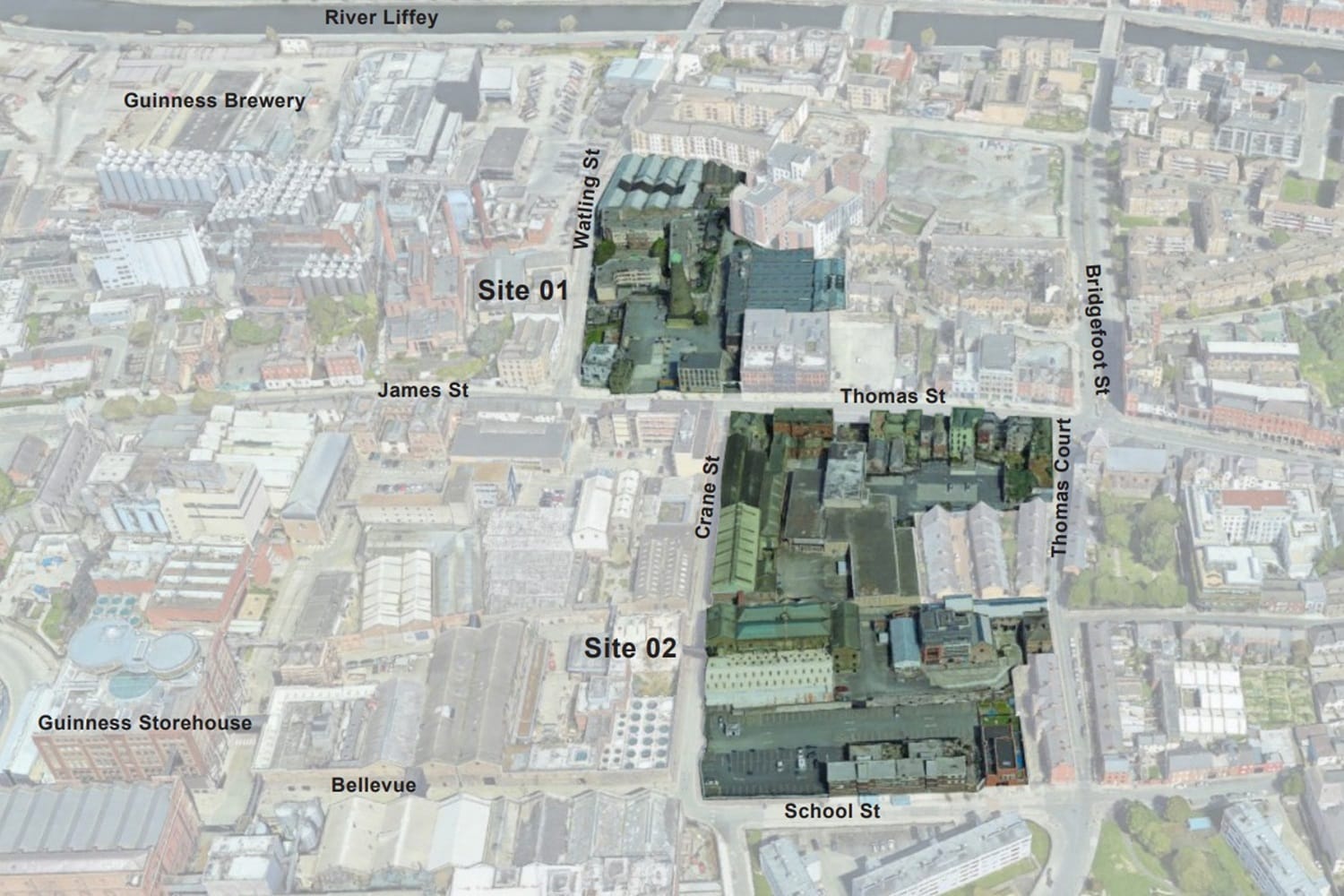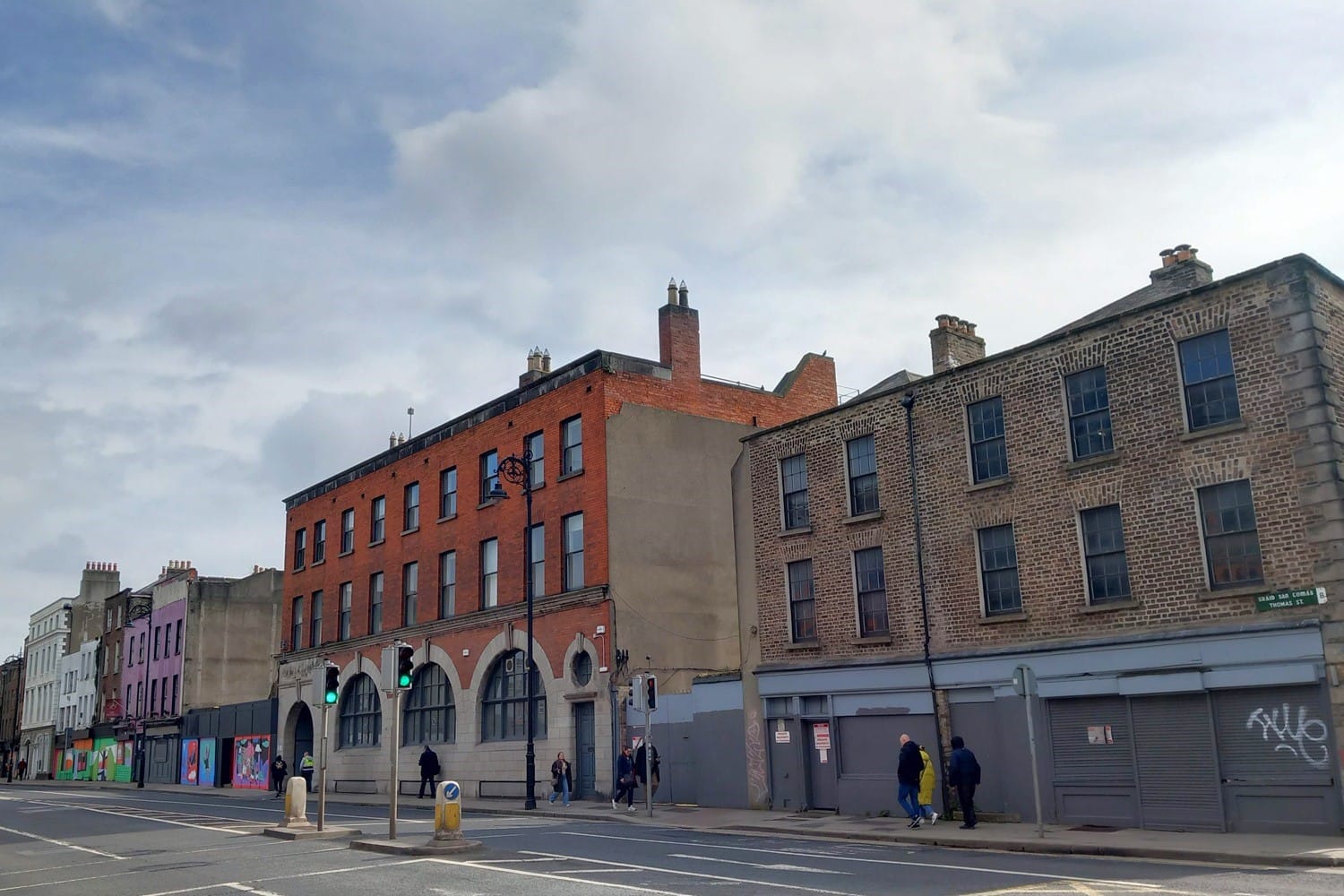What would become of the Civic Offices on Wood Quay if the council relocates?
After The Currency reported the idea of the council moving its HQ, councillors were talking about and thinking through the pros and cons and implications.
The government has ordered the transfer of the Hub’s campus to the Land Development Agency, but it only wants some of the land – and not for years.

As the Digital Hub campus on Thomas Street in the Liberties is handed over to the Land Development Agency (LDA), properties now in use there could fall into disuse.
The chair of the Digital Hub Development Agency (DHDA), which runs the Digital Hub, has been raising such concerns for years with the Department of Environment, which is overseeing the proposed handover.
The government announced in 2021 that it was planning to wind down the Digital Hub, and transfer its campus to the LDA.
Dozens of small companies, employing hundreds of people, rent offices at the Digital Hub (including Dublin Inquirer). But a 2020 review by consultants Grant Thornton said there were plenty of places in the city these companies could move to.
And Ossian Smyth, minister of state in the Department of Environment, said in 2021 that offices and digital start-ups aren’t the city’s most critical needs. “Dublin city is filled with enterprises and start-ups but what is lacking is housing,” he said in the Dáil.
The LDA released a masterplan a year ago to turn it into a €180 million development called Pear Tree Crossing, with 550 new homes. That shows new apartment buildings rising, in stages, from the Liberties on the north and south sides of Thomas Street.
Phased development of Pear Tree Crossing could leave some buildings that the DHDA now rents out as offices for small companies in the LDA’s hands for years as it develops the campus, one part at a time.
Not only that, but the Pear Tree Crossing masterplan shows some protected buildings, particularly along the south side of the street, remaining intact – and their future uses are unclear.
The LDA “has identified some parts of our property as suitable for the development of housing and other parts as unsuitable”, DHDA chair Paul Holden wrote to Environment Minister Eamon Ryan in a February 2021 letter.
Correspondence between 2021 and 2024 released under the Freedom of Information (FOI) Act shows the DHDA pushing the department to help put as much of the Digital Hub campus to use as possible.
All this in a part of the city blighted by dereliction, and short of community spaces, cultural venues, and sports facilities.
The DHDA was set up in 2003, and the state has given it an average of €1.6 million a year since then, amounting to a total of approximately €28.8 million, according to the Grant Thornton report.
Following a strategic review, the government “concluded that the Digital Hub is no longer required to sustain the continued growth of Dublin’s digital enterprise sector”, Smyth said in the Dáil not long after plans to wind up the DHDA were announced.
The DHDA said at the time in a press release that it was “deeply disappointed” in the decision.
The lands to be handed over to the LDA include a big parcel on the north side of Thomas Street, surrounding St Patrick’s Tower – the sail-less windmill that a lot of people associate with the Digital Hub.
They also include a big parcel on the south side of Thomas Street, including a terrace of three- and four-storey buildings, including an old city library, and stretching all the way south to School Street.
The whole lot of them – north and south – together adds up to 3.72 hectares.


The masterplan’s architectural renderings show brand-new apartment blocks on some parts of these two sites – and says they could reach 12 storeys. But the plan also shows protected buildings, remaining intact, especially along the southern side of the street.
“The site has a number of architecturally important buildings along Thomas Street and on Crane Street including the Vathouse 7 building, a disused brewery building with significant early industrial character which provides a strong shaping element within this block,” the plan says.
“The existing buildings along Thomas Street provide a challenge and opportunity to provide a mix of uses above the ground floor retail opportunities,” it says.
In a February 2023 letter to Ryan, the minister, Holden, the DHDA chair, wrote that “It appears likely that the transfer will be effected over a timescale of five to ten years.”
However, that time scale appears soon to have stretched out.
Smyth, minister of state in the Department of Environment, visited the Digital Hub in April for a tour, and afterwards, Holden, the DHDA chair, wrote to him.
“As we discussed, the Government decision that the DHDA is to be dissolved and its property assets transferred to the Land Development Agency was taken in the understanding and the hope that our sizeable property portfolio could be developed easily and quickly to realise a significant number of housing units,” Holden wrote.
However, a March 2023 report from the LDA “indicates that they regard The Digital Hub as a Category 2, medium-term opportunity, in a 10+ year timeframe”, Holden wrote.
“The masterplan gives no indication of how the buildings that are not earmarked for housing are to bse used, nor what is to happen to the entire site pending its transfer to the LDA,” Holden wrote.
Writing again in July of the same year, Holden said “I understand that the process of transferring ownership of the DHDA lands and properties to the LDA may take somewhat longer than originally envisaged.”
“In the meantime,” Holden wrote, “it is important that the buildings be used as productively as possible in the interest, not only of minimising the DHDA’s reliance on Exchequer financing, but also of maximising the benefits to the local community and Dublin as a whole, and of ensuring that the property is maintained in good condition prior to its handover to the LDA and its subsequent redevelopment”.
In September 2023, Oonagh Buckley took over as secretary general of the Department of Environment – and she met with the chair and the CEO of the DHDA in November, a department spokesperson says. Later in November, Holden, the chair, wrote to Buckley.
“It was very useful to have the opportunity of explaining the difficulty the Board and the Executive have in simultaneously respecting the Government decision to dissolve the Digital Hub Development Agency and continuing to exercise our statutory responsibilities,” Holden wrote.
“The timescale originally envisaged for implementation of the Government decision was unrealistic, and, if a more realistic timescale is accepted, the Agency can use its remaining time in operation in a productive way,” he wrote.
In late January of this year, Buckley visited the Digital Hub for a campus tour.
How best to put all the properties there to use while waiting for the LDA to redevelop what it wants to – and what to do with the properties there that the LDA doesn’t want – were apparently part of the discussion with DHDA leaders while she was there.

As, afterwards, Patrick Neary, assistant secretary in the Department of Environment, emailed the DHDA to ask “Colleagues mentioned that you had sight of what properties LDA are keen to take and which ones once they are not. Could you please send us any information you have on this.”
Neary’s email suggests that the department is reviewing its plans for the Digital Hub campus. “We may revert with further requests for information as we conduct our review and would be very grateful if you can support us with these as they arise,” he wrote.
Digital Hub CEO Fiach Mac Conghail replied that he couldn’t speak for the LDA, but that there were a few things he said he did know, which he set out in a bulleted list.
“The LDA will only take ownership of DHDA-owned sites which are de-risked in terms of the planning application process,” he wrote. “The LDA are only interested in building and supplying affordable homes at scale.”
The Pear Tree Crossing masterplan sets out the sites the LDA could develop as affordable housing schemes, Fiach Mac Conghail wrote.
“All other sites/buildings on the Pear Tree masterplan designated as commercial and/or mixed use would have to be developed and funded by third parties,” he wrote. “The cost of this, in my opinion, would be outside the remit of the LDA as it would cause to increase the affordable housing costs and formula.”
Mac Conghail said there was a need for “a tri-partite” meeting involving the DHDA, Department of Environment, and the LDA. “We have been requesting one for the last couple of years.”